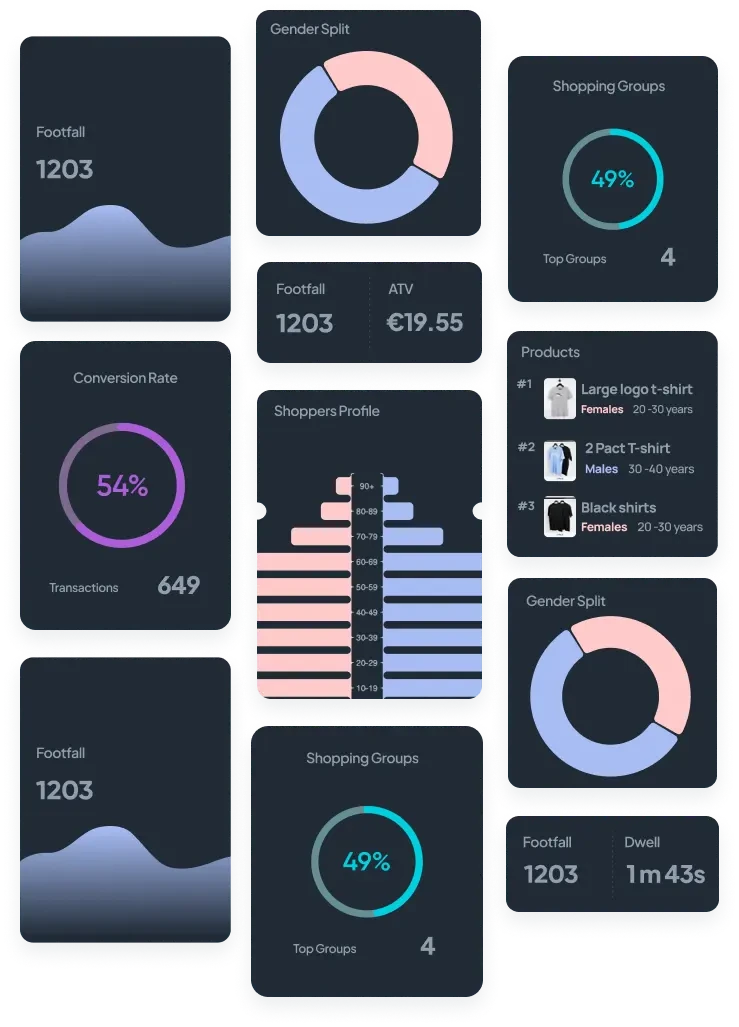What are the most common uses of AI in Retail today?
Keith Monaghan
October 31, 2023
Retailers that are looking to stay one step ahead, are increasingly looking to artificial intelligence (or AI) to help understand the millions of data-points readily available to them in-store. AI has been changing the world around us and retail was one of the first consumer industries to put different forms of it to use.
In 2019, Harvard, released a white paper, positing that the 2020’s would be the decade of artificial intelligence in the retail space. It’s hard to argue against when the turn of the decade saw the launch of the all-knowing, but still prototypical Amazon Go store. But aside from Amazon, where does the rest of the retail world fit in when it comes to artificial intelligence?
Most of the talk in retail prior to 2019 seemed to be about the fear of artificial intelligence replacing jobs in the industry, but there was a fundamental misunderstanding over how AI could really be utilized.
Self-Scanning checkouts were one of the the first highly visible forms of AI that affected the personal shopper experience. However, checkouts are merely robotic tills, where a customer can scan their own items, and then place them onto a weighing scale before completing their transaction.
This is not artificial intelligence as we truly understand it today. AI today is being used to help enhance a store’s operations, to make the lives of floor staff and management easier, and to compliment, not to replace. The most common areas where retailers would like assistance from AI tend to revolve around:
Customer Experience
Customer experience can be enhanced by learning about those in-store. A shopper can be anyone entering a store location, but a customer is the person that actually purchases a retailer’s wares.
AI can customize a shopper’s experience and retailers can make better decisions for their store if they know who their shopper is, how long they usually browse, and what items tend to be seen together in baskets, or who is most-commonly seen at the till.
Having access to this information can allow a retailer to capture more revenue from their highest average spenders, or even increase spending from those shopper groups who are commonly seen entering but perhaps don’t spend as much.Store Layout
Stores can be limited by their shop floor and retail space. Some retailers strive to give each store uniformity, and make an experience in one location, as identical as possible to a location halfway around the world, giving their shopper base a sense of familiarity and comfort. Other retailers allow their individual store locations to make theirs their own, whilst selling a mostly identical range of items.
Each layout, no matter the brand or location, poses different challenges, and knowing how best to use space to ease a shopper’s journey can be an ongoing project for retail teams. AI can be used to map shop journey, from the way people enter the store and which directions they walk in, to how regularly shoppers make it to certain aisles, changing rooms, or secluded sections of the store, where retailers may like to see more activity or engagement.Inventory management
AI can play a huge role in inventory management, from knowing precisely how many units of stock are on the shelves to how many units are available to go out on shelves. Retailers have been toying with ways to check shelf availability for years, some larger chains, with the resources to spare, have invested in object detection technologies as a way of knowing when shelves aren’t full or heat-mapping technologies to predict when aisles will get particularly busy.
Robotics are in some cases used to scan aisles, resupply shelves, and even assist shoppers in their requests. These technologies have advanced in the previous decade enormously but are perhaps still a little too experimental and expensive for the SME retailer.Forecasting
Forbes described it as when data meets AI, and used the newly coined term “omnichannel” to describe changing consumer habits, where a blend of location intelligence, transaction histories, and consumer profiles, all compiled using artificial intelligence was the most effective way to predict consumer trends and spending habits.
AI can be used to forecast trends, especially when forms of it are used to show a retailer their shopper demographics and how they interact in-store. Measuring a shopper base while examining sales in tandem, can allow retailers to predict where the next product push needs to happen or where prices should be altered to increase revenues and capture additional spend.
These are just some of the more notable areas where artificial intelligence is being incorporated into physical retail. While tech leaders have been debating its merits for over a decade, one consensus appears to be that retailers who refrain from embracing AI, can of course continue to function as they always have, but they will constantly have to compete with other businesses in their space who are using AI to their advantage.
Get Started
What Gets Measured, Gets Managed!
VisionR mines data directly from shoppers as they navigate stores, empowering retailers with real-time insights to maximise their decisions & revenues.
